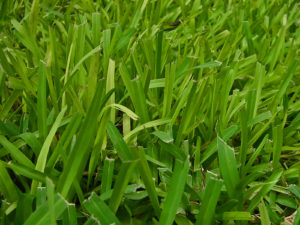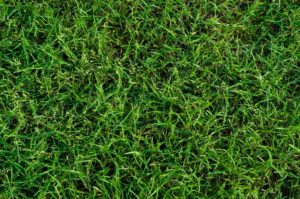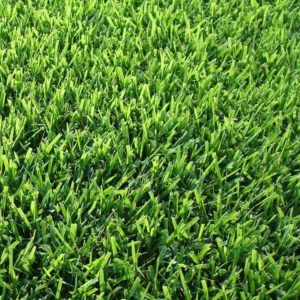Central Texas Grass
Though we do not think about it much, our climate has a big impact on our life, and your grass is a big part of your personal climate! In Austin (the southernmost state capital in the US of A!), we have a lot of benefits from our temperate weather. Sandals and Shorts are appropriate attire year-round. Outdoor patios are a useable portion of our homes for most of the years. We have a lot of festivals that can’t be interrupted by nasty cold weather. We have only two seasons, Summer and Christmas time.
This warm weather also gives us Warm Season Grasses. Grasses are divided into two broad categories, Warm Season Grasses, and Cool Season Grasses. In Austin, we can grow all the warm season grasses and even a few Cool Season grasses. We are spoiled for choice. Let’s look at a few of the most common, and useful grasses, that can be found in our corner of the world.
St. Augustine
 St. Augustine grass is an import, though we don’t know exactly where it originates. Some think it came from Africa, other sources claim it already existed in the Caribbean before the new and old world met up. Either way, it does well in our state. Texas is the ONLY place in the US where St. Augustine will seed and spread naturally without human intervention.
St. Augustine grass is an import, though we don’t know exactly where it originates. Some think it came from Africa, other sources claim it already existed in the Caribbean before the new and old world met up. Either way, it does well in our state. Texas is the ONLY place in the US where St. Augustine will seed and spread naturally without human intervention.
In general, this grass is temperamental but hearty. It has shallow roots, and so it can dry out and die quickly and can be damaged by hard freezes. It also suffers from diseases and fungal infections. But it also grows fast. Really fast. It grows fast enough to recover from whatever damaged it in the first place. It can spread out runners in all directions and power itself back into a healthy turf in a relatively short time. The secret is water. You give St. Augustine enough water, and it will grow and grow and grow.
Raleigh St. Augustine
Raleigh St. Augustine is a St. Augustine variety specifically bred to minimize the failings of the parent plant. It is less prone to disease and can survive better on less water (though it generally needs a lot more water than Bermuda or Zoysia.) Raleigh forms a great lawn. Its best in locations where water is not an issue. Properties with private wells or access to river water have the lushest St. Augustine lawns.
If you are careful and keep Raleigh healthy, you can also form a great lawn with less water. It’s just more prone to damage in the middle of a drought, or during particularly hot week or two.
Amerishade St. Augustine
Amerishade St. Augustine has been bred specifically to survive in lower light conditions. In general, St. Augustine needs 6 hours of direct light to grow. Amerishade will grow with only 3 hours of direct light. No grass is happy in low light, but Amerishade will stick around in light conditions which would kill off Bermuda in a few weeks.
Remember, light is important for all plants. Plants make their food but need sunlight to do it. If you were to stop eating, you would get thin, and eventually die. The same goes for grass in the shade. Amerishade can simply survive on less food, meaning it needs less light. If the light falls below 3 hours of direct sunlight it will starve and die as well. Amerishade is not a magic bullet for your shade problem, but in the right conditions, it works wonderfully where other grasses couldn’t grow.
Bermuda
 Bermuda was imported from Africa and has naturalized itself so well that it is now generally considered an invasive weed. To fight this tendency to take over, hybrid Bermuda grasses were developed that are much better behaved. Hybrid Bermuda will not grow from seed, so it can be kept in check. It will grow in from the edges, but cant jump to the middle of a bed with a few well placed seeds.
Bermuda was imported from Africa and has naturalized itself so well that it is now generally considered an invasive weed. To fight this tendency to take over, hybrid Bermuda grasses were developed that are much better behaved. Hybrid Bermuda will not grow from seed, so it can be kept in check. It will grow in from the edges, but cant jump to the middle of a bed with a few well placed seeds.
Bermuda grows so well because it needs extraordinarily little water, it grows very quickly, and it has a very efficient “survival mode” that gets it through tough times. Bermuda will put itself into dormancy when conditions go bad, and then will pop back to life when conditions improve. It has been established without irrigation even in hot Texas – though it will go dormant and turn brown when the heat hits. Give it better conditions, and it will stay green and healthy for most of the year.
The main downside is that Bermuda needs nitrogen (an important nutrient for plant growth) to grow well. Unfortunately, Austin soils have little nitrogen. The trick to having good Bermuda is Fertilization, Fertilization, and more fertilization. Think TWICE the fertilization generally recommend nationally.
Celebration Bermuda
Celebration is an improved hybrid Bermuda that does very well in our area. It was developed for its slightly blue-green hue, short natural growth habit, and (surprisingly) shade tolerance. The breeders were successful on everything EXCEPT the shade tolerance. Bermuda just needs a lot of light. If Celebration gets less than 6 hours of light, it will die back as fast as any other Bermuda. Do not believe any marketing hype to the contrary.
Where Celebration truly thrives is in a lawn with direct sunlight and a lot of foot traffic. You have a soccer team practicing in your yard? – you need Celebration. Given plenty of light, some fertilizer, and a minimum of water, this grass will hold up like a superhero. You have a puppy tearing around your sunny yard all summer long? Use Celebration, and it will grow back from damage without trouble.
There is a reason Celebration is a go-to lawn in our area. Builders use it because it is cheap. Landscapes use it because it grows well. Just remember, it doesn’t work in the shade, and it needs good fertilization and regular mowing to do it’s best.
Tif Bermuda (Tif419, Tifway, TifSport, etc.)
Tif is the Bermuda with a sporting pedigree. It has been around a lot longer than Celebration Bermuda. This grass was specifically bred for sports fields and putting greens. Given pristine maintenance, it will transform into a hearty surface equally capable of use as a putting green, a sports field, or even a tennis court! But getting those results take effort.
In most landscapes, Tif’s true potential lays dormant. Even so, it makes a good lawn. It has a taller growth habit than Celebration, so weekly mowing is even more important. Like all Bermuda, it needs plenty of light and lots of fertilization. It also retains the fast growth, and its ability to retreat into dormancy when things get tough.
Give how long this grass has been around, there is not much that this grass cannot survive. It also has a sleeping potential to be much more if you are willing to engage a full-time groundskeeper!
Zoysia
 This import hails from Asia. Zoysia is something of a newcomer to the block. Sort of. Varieties of zoysia were adapted to our region back in the ‘50s, but it is only in recent years where expanding availability, and increasing demand, has seen this grass explode in popularity. It is sort of the “baby bear” of the bunch; not too hard, and not too soft, but just right. It has many of the desirable traits of St. Augustin and Bermuda and avoids some of the pitfalls.
This import hails from Asia. Zoysia is something of a newcomer to the block. Sort of. Varieties of zoysia were adapted to our region back in the ‘50s, but it is only in recent years where expanding availability, and increasing demand, has seen this grass explode in popularity. It is sort of the “baby bear” of the bunch; not too hard, and not too soft, but just right. It has many of the desirable traits of St. Augustin and Bermuda and avoids some of the pitfalls.
Zoysia develops a deep root system, making it nearly as drought-tolerant and low water use as Bermuda. It can handle lower light levels like Amerishade St. Augustine. And, in the sun, it can form a hearty turf that holds up to typical use. It is available in several varieties that can be blended with existing St. Augustine or Bermuda lawns to improve their performance in problem areas. It benefits from good fertilization but does not need the same levels of nitrogen that Bermuda relies on.
Zoysia’s main drawback is that it grows slower and spreads slower. This hamper’s its ability to recover from extensive damage. Eventually, it will grow back, but not as fast as St. Augustine or Bermuda. This is because Zoysia spreads underground, unlike St. Augustine or Bermuda that spreads above ground and then drops roots from runners. If you have ever dug around in our rocky, clay choked soil you understand why it takes so long for the zoysia to spread.
Palisades Zoysia
This variety of Zoysia has become exceedingly popular in our area over the year. Its leaves are a medium thickness, giving it a middle ground between St. Augustine and Bermuda. This means it can be mix with either without looking completely out of place. It has all the beneficial properties of Zoysia, plus one big bonus. Its popular and common. Because it is so popular, it is easy to find, easy to identify, and easier to care for than some of its more exotic cousins in the Zoysia family.
Zorro Zoysia
This one is a favorite, preferred by many sod lovers. Zorro Zoysia is a narrow-bladed grass, with all the benefits of Zoysia. It is probably the best barefoot grass in Austin. It has probably the best foot feel of any warm-season grass, on par with the cool-season grasses found up north.
Zorro Zoysia is not as common as Palisades Zoysia, and it looks like the Zenon and Emerald varieties of Zoysia (though it performs better in most cases.) The thin blade can also be confused with Bermuda if you do not look closely. Sometimes this creates problems with maintenance or repairs.
If you know what you have, and treat it well, this is an amazing grass.
Winter Rye
Rye isn’t so much of a turf grass around here, but winter rye grass (or ryegrass) is a good way to keep your lawn green through the winter in Austin. It can also help prevent new weed growth.
We sometimes “overseed” perennial rye grass over your existing lawn in the fall. We use a hydraulic slit seeder, and always recommend getting your lawn aerated and top-dressed at the same time.
—
We have experience with hundreds of different lawns literally daily. Our comments are based on direct observation. But you don’t have to take our word for it. Texas A&M has a great resource with its AgriLife Extension Service, and they research and evaluate grass all over the state. Additional information on the different types of sod can be found here: Turfgrass Selection for Texas
Interested in getting sod in your yard?

